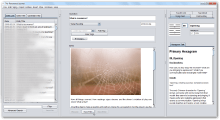Giving readings more space
I’ve been blessed with some wonderful reading clients over the past year, and I’m hugely grateful for the experience. I’ve witnessed clarity dawning, knots untying themselves, blocks dissolving – Yi at work. I love it. And… I realise there’s something I need to tweak a bit to create more space… Read more »Giving readings more space









